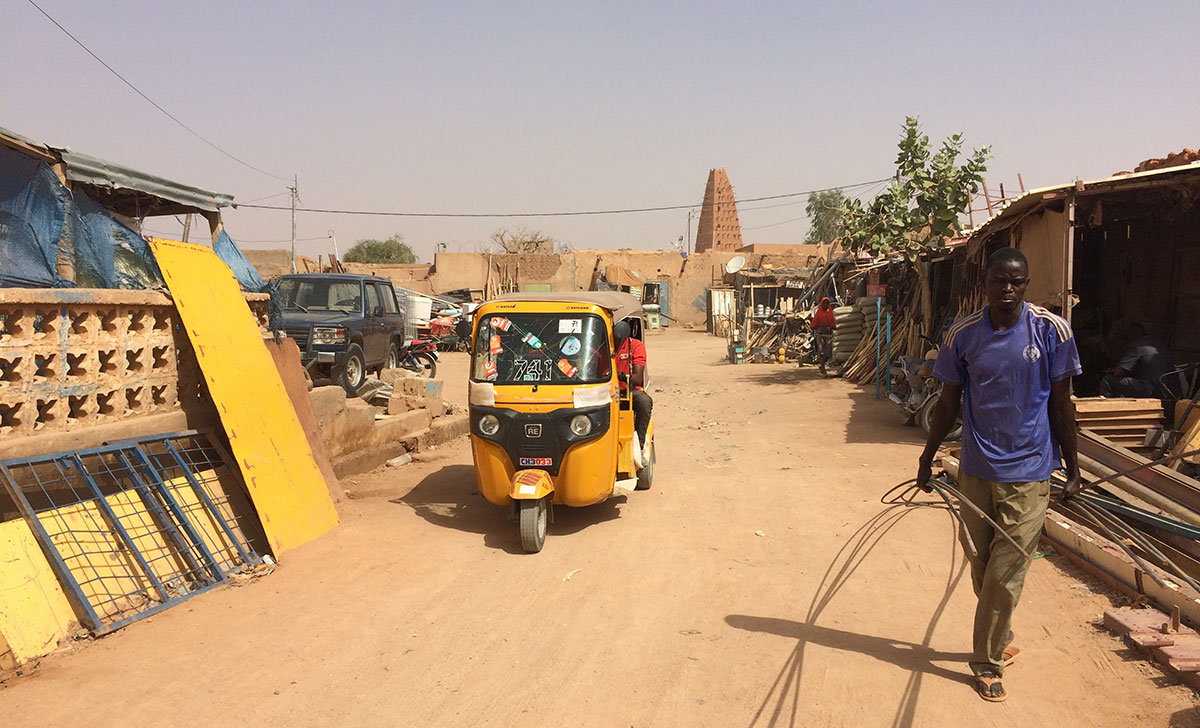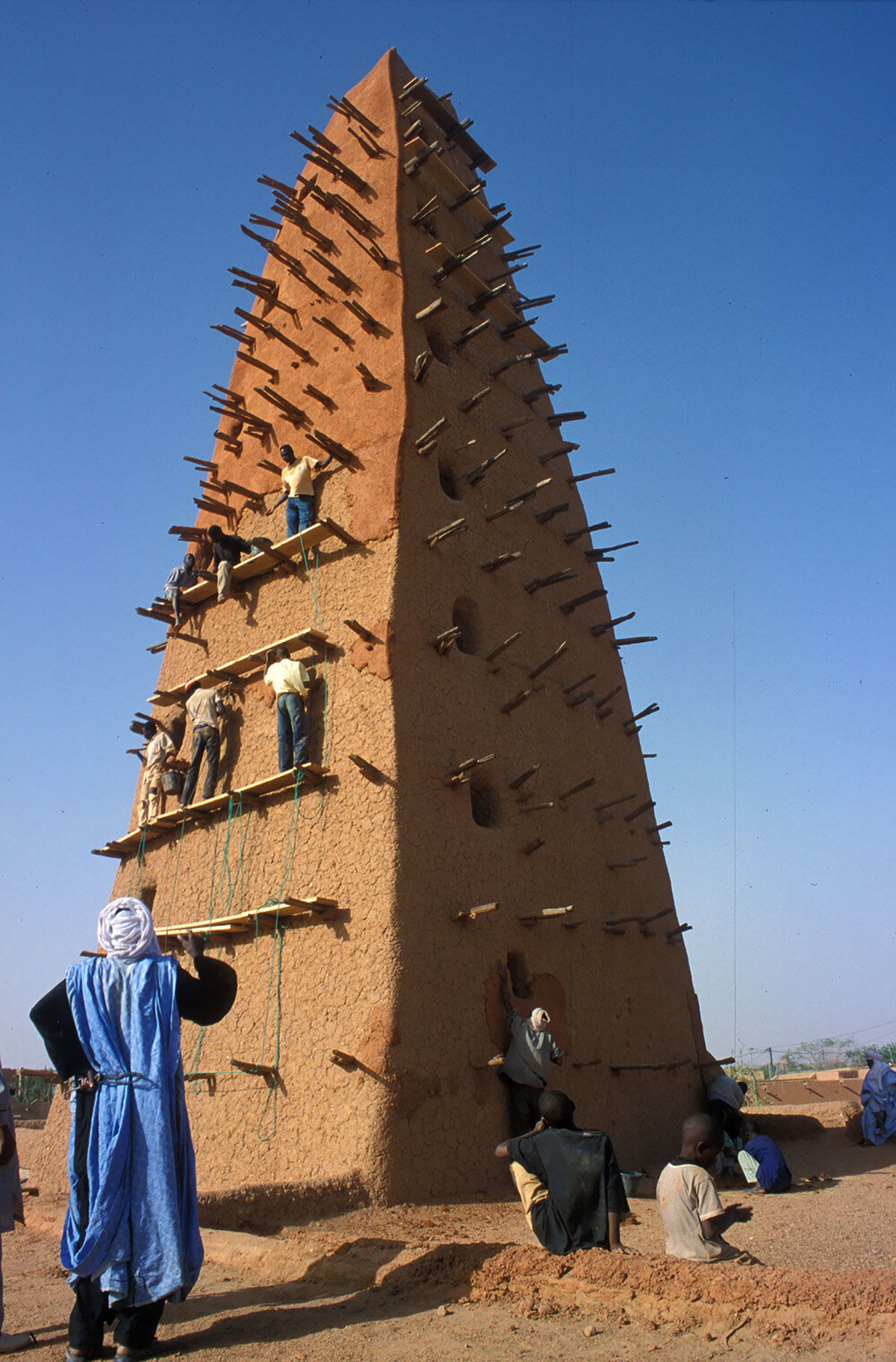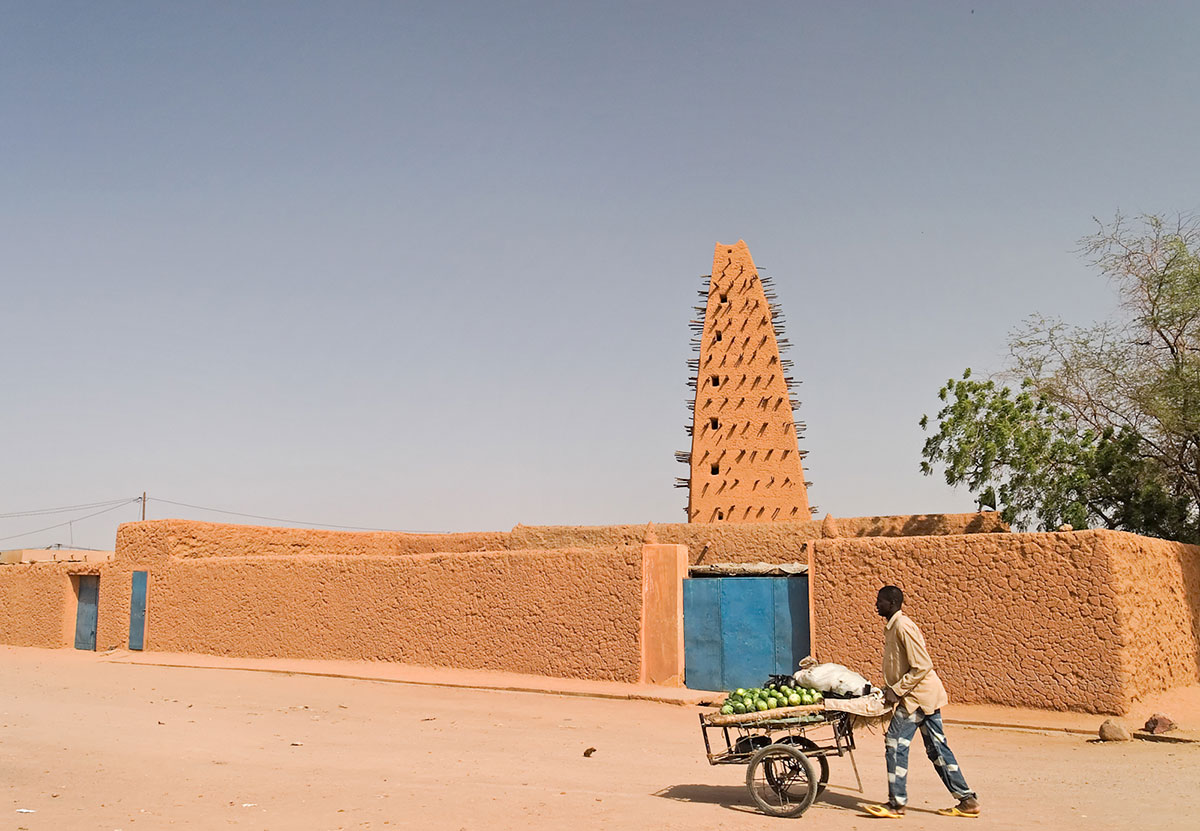The Tuareg people are a large Berber ethnic group of nomadic shepherds. Its original members moved south, under the designs of the founding queen Tin Hinan, between the 4th and 5th century AD, according to historians, from the Tafillet region of southeastern Morocco to the Sahel. Today they mainly inhabit the Sahara desert, in a vast area stretching from the south-western tip of Libya to southern Algeria, Mali, Burkina Faso and, for that matter, Niger.
Niger is home to Agadez, capital of the region of the same name and of Aïr, one of the traditional federations of the Tuareg Berbers. The city’s historic centre is a UNESCO World Heritage Site. The minaret of its mosque is one of its most important monuments, conspicuous in both time and space.

Vincent van Zeijst | CC
Indeed, any of the city’s 110,000 inhabitants (according to the 2012 census) need only look up and search with their eyes to find the peculiar structure of the minaret of the Agadez mosque. In a city that has hardly any buildings taller than one floor, two at most, the minaret stands out as the main element of orientation and reference for its inhabitants. The same is true for the caravans approaching after crossing the desert, which, long before they can make out the city’s buildings, glimpse the prominent minaret.

Vincent van Zeijst | CC
The city of Agadez began to develop in the 11th century AD, when it established itself as an important trading centre due to its location at the southern tip of the Sahara. Known since then as the gateway to the desert, the Tuareg tribes settled in the city in the 15th and 16th centuries with the founding of the Sultanate of Aïr. During the process of building their settlements, the boundaries of the old encampments were respected, the remains of which can still be seen in the layout of the streets. Its mosque was built in 1515, when the city was captured by the Songhai Empire (one of the greatest African empires of all time, but that’s another story).
The Tuareg are said to have imported from Timbuktu the architecture according to which the minaret of the Agadez mosque was built. It is a truncated pyramidal structure rising into the sky with wavering edges. After all, the ancient inhabitants of the city had little in the way of building materials such as cement or stone, or wood to use as fuel for making bricks. So, they used mud, straw and pebbles, a mixture of local materials that they shaped into bricks and left to dry in the sun, or adobe, to erect the mosque and its minaret. Yet, they did not have sophisticated building tools either, but used their own hands (as they still do today). This can be seen in its organic materiality, in its rounded, meandering forms.
At the mercy of wind and rain erosion, adobe buildings need constant maintenance. A tower like the minaret of the Agadez mosque requires scaffolding for its renovation. However, the Tuaregs, who do not have scaffolding, brilliantly solved this dilemma: they built the scaffolding into the tower itself; the wooden beams that support it internally protrude from the walls and support the platforms used by the members of the community for its restoration.

Vincent van Zeijst | CC
Legend has it that Imam Bakhili, a famous scholar from the region of Algeria, completed the construction of the mosque and its minaret in a single night, between Isha prayer and dawn. However, we have not found the reason for his haste. Oh, by the way, we almost forgot: at 27 m high, the minaret of the Agadez mosque is the tallest adobe structure in the world.

Wilfredo Carazas Aedo | whc.unesco.org/en/licenses/6
Although there is not much audio-visual documentation, we have located the following for your illustration AMATEUR VIDEO.
Fuentes: Wondermondo, Wikipedia, UNESCO.








